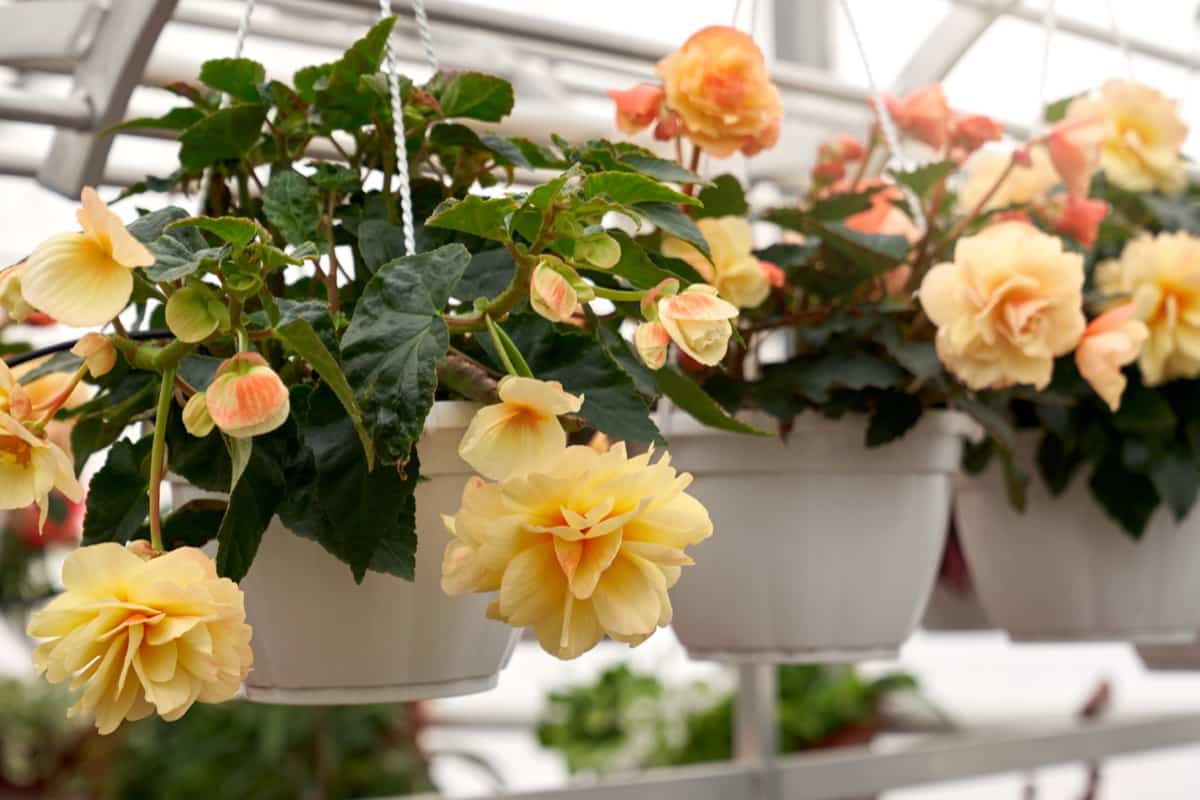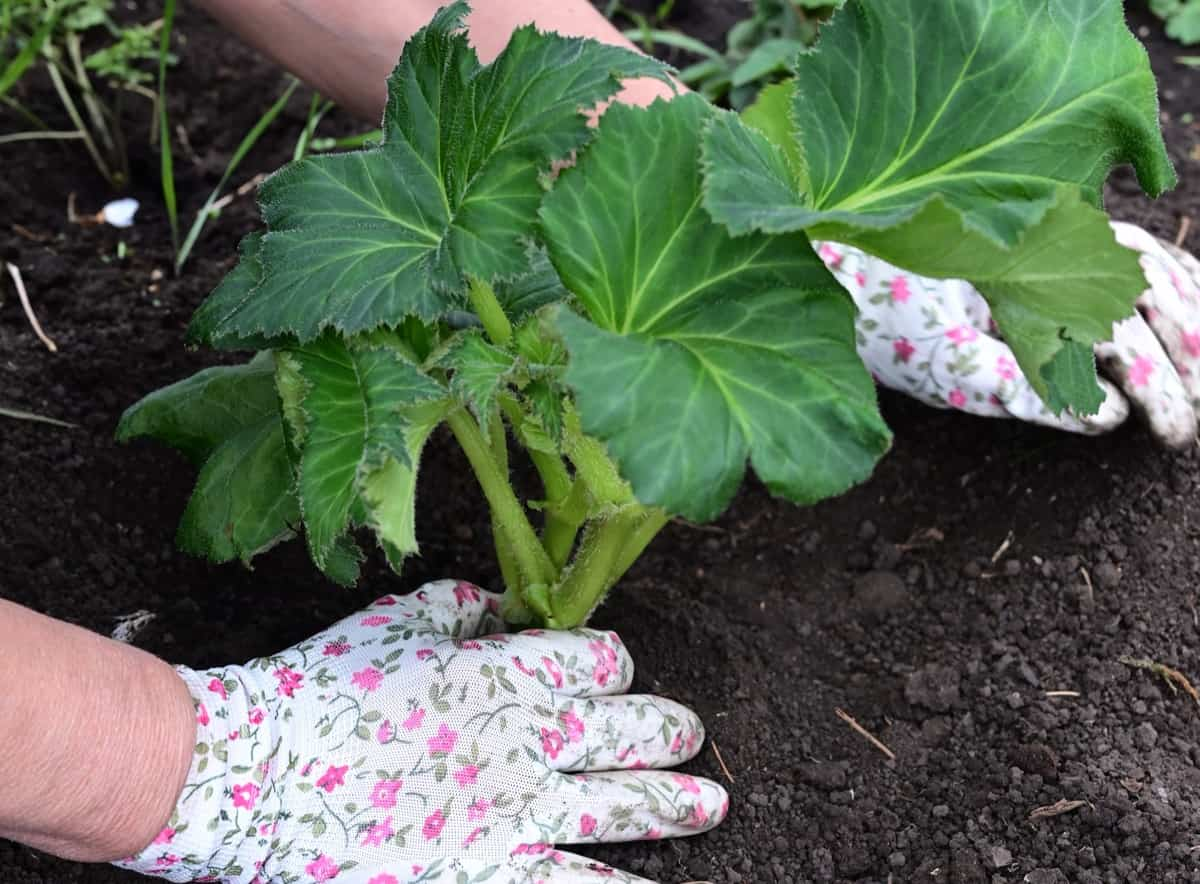Begonias are beautiful flowering plants that add color and elegance to any garden or indoor space. However, if your Begonias aren’t blooming as expected, there could be various reasons behind it. Several factors can hinder the blooming process of Begonias, from inadequate sunlight and improper watering to nutrient deficiencies and pests.

By identifying the specific issue affecting your plants and taking appropriate measures, you can help them thrive and produce vibrant blooms. Remember to provide your Begonias with the right light, water them correctly, ensure they receive essential nutrients through fertilization, and protect them from common pests. With proper care and attention, you’ll soon see those gorgeous blooms gracing your Begonia plants again.
8 Reasons Why Your Begonias Are Not Blooming
Lack of Sunlight
One common reason Begonias may fail to bloom is a lack of sunlight. These beautiful plants thrive in bright, indirect light; without it, their blooming potential can suffer. Begonias are native to tropical regions where they receive ample amounts of filtered sunlight. When grown indoors, it’s crucial to provide them with sufficient light. Place your Begonia near a window that receives bright but indirect sunlight for at least six hours daily. Monitor your plant’s response and adjust accordingly.
Improper Soil pH Levels
The pH level determines the soil’s acidity or alkalinity, and different plants have specific preferences for optimal growth. Begonias typically thrive in slightly acidic to neutral soil with a pH range between 5.5 and 7.5. When the soil’s pH is too high or too low, it can impede nutrient absorption by the plant’s roots, leading to poor blooming performance.
Acidic soils with a low pH can cause essential nutrients like phosphorus, potassium, and calcium to become less available for uptake by the Begonia. Adding organic matter can help lower high pH levels while incorporating sulfur will increase acidity in alkaline soils. Monitoring and maintaining balanced soil conditions will provide an ideal environment for your Begonias’ root development and promote abundant blooms throughout their growing season.
Improper Watering
Watering your Begonias properly is crucial for their overall health and blooming. Unfortunately, many people make mistakes when watering their plants, leading to lackluster blooms or even plant death. One common issue is overwatering. Begonias prefer moist soil but not soggy conditions. If you water them too frequently or give them too much water at once, the roots may become waterlogged and start to rot. This can prevent the plant from taking in nutrients and ultimately hinder blooming.
In case you missed it: How to Grow Begonias in a Greenhouse: A Step-By-Step Guide for Seed to Harvest

On the other hand, underwatering can also be a problem. Begonias need consistent moisture throughout their growing season, especially during the hot summer. If you neglect to water them regularly or provide insufficient water, they may become dehydrated and fail to produce vibrant flowers. To ensure proper watering, it’s important to find a balance. Aim for thorough saturation without allowing excess water to accumulate in the pot’s saucer when watering.
Nutrient Deficiency
When it comes to Begonias not blooming, one often overlooked culprit is nutrient deficiency. One common nutrient deficiency in Begonias is nitrogen. Nitrogen is crucial for lush foliage growth, but your plants may suffer if there isn’t enough available in the soil. Signs of nitrogen deficiency include pale leaves and stunted growth. Another important nutrient for Begonia bloom production is phosphorus. This nutrient plays a vital role in flower formation and development. If your Begonias lack phosphorus, you may notice fewer or smaller blooms.
Potassium deficiency can also hinder bloom production in Begonias. Potassium helps with overall plant health and encourages strong root development. Without enough potassium, your plants may struggle to produce abundant flowers. Providing your Begonias with a well-balanced fertilizer formulated specifically for flowering plants is important to combat these nutrient deficiencies. Look for fertilizers with an N-P-K ratio that promotes both foliage growth (nitrogen) and bloom production (phosphorus and potassium).
Temperature Extremes
When it comes to high temperatures, Begonias may become stressed and wilted. Excessive heat can cause the soil to dry out quickly, leading to dehydration for the plant. This lack of water can prevent proper nutrient uptake and affect overall growth and flowering. On the other hand, extremely low temperatures can also be detrimental to Begonias.
Frost or freezing temperatures can damage the plant’s tissues, causing them to die or even perish completely. Protecting your Begonias from frost is essential by covering them or bringing them indoors during colder months. To mitigate temperature extremes’ negative effects on your Begonias’ blooming potential, consider providing some shade during hot summer days and protecting them from chilly weather in winter.
Pests and Diseases
Aphids can quickly multiply and infest your Begonias. They feed on the plant’s sap, leaving behind sticky honeydew, which attracts ants and promotes the growth of sooty mold. Spider mites are another common pest that sucks the sap from leaves, resulting in yellowing foliage. Fungal infections like powdery mildew appear as a white powdery coating on Begonias’ leaves, stems, and flowers. This can stunt their growth and inhibit blooming.
Botrytis blight is a grayish fungus that causes rotting of flower buds and petals. To combat these pests and diseases, regularly inspect your plants for any signs of infestation or infection. Remove any affected leaves or flowers immediately to prevent further spread. Consider using organic insecticides or fungicides specifically formulated for Begonias if necessary.
Improper Pruning
Pruning is important to care for Begonias, but it’s easy to go wrong if you don’t know what you’re doing. Improper pruning can lead to a lack of blooms and stunted plant growth. One mistake people make is pruning too early or late in the season. Begonias should be pruned after they have finished blooming for the year. If you prune them too early, you risk cutting off potential flower buds.
On the other hand, if you wait until too late in the season, new growth may not have enough time to develop before winter arrives. Another mistake is over-pruning or removing too much foliage at once. While removing dead or damaged leaves and stems is important, excessive pruning can stress the plant and inhibit its ability to produce flowers. It’s best to trim only what is necessary and allow the plant to maintain its natural shape.
Overcrowding
Overcrowding is another common reason why Begonias may not be blooming. Too many plants crammed together in a small space can lead to competition for light, nutrients, and water. This lack of resources can hinder the growth and flowering of the Begonias. To address overcrowding, giving each Begonia enough space to thrive is important.
In case you missed it: 10 Common Problems with Garden-Grown Tomatoes: Treatment and Solutions

Consider transplanting your plants into larger pots or spreading them in your garden bed if crowded. This will allow each plant access to the necessary resources for healthy growth and abundant blooms. When transplanting or rearranging your Begonias, ensure not to damage their roots, as this can further stress the plants.
Conclusion
If your Begonias aren’t blooming as expected, a few reasons could be causing this issue. It could be due to inadequate sunlight, improper watering techniques, or nutrient deficiencies in the soil. Identifying and addressing these factors can help your Begonias thrive and produce beautiful blooms.
- Ultimate Guide to Ossabaw Island Hog: Breeding, Raising, Diet, and Care
- Ultimate Guide to Juliana Pig: Raising Facts, Size, Diet, Care, and Lifespan
- Raising Lleyn Sheep: Disadvantages, Price, Uses, Characteristics, and Care
- Ultimate Guide to Meishan Pig: Breed Facts, Breeding, Raising, and Care
- Ultimate Guide to Teacup Pigs: Raising, Diet, Lifespan, Cost, and Care
- Guide to Raising Poll Dorset Sheep: Facts, Profile, Characteristics, Uses, and Care
- Ultimate Guide to Bighorn Sheep: Characteristics, Diet, Lifespan, Breeding, and Lifecycle
- Ultimate Guide to Raising Katahdin Sheep: Farming Facts, Breed Profile, Uses, and Care
- Ultimate Guide to Raising Oreo Cows: Belted Galloways Farming Facts, Profile, Uses, and Care